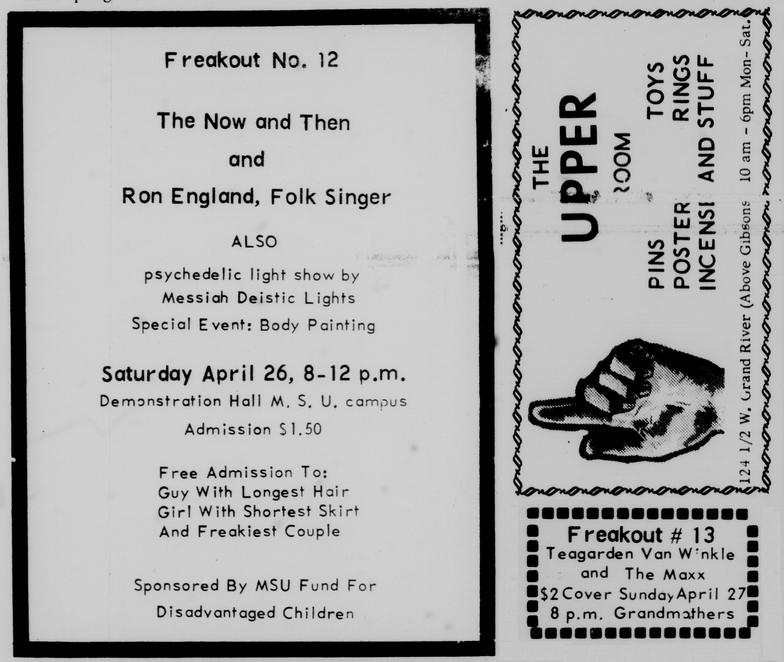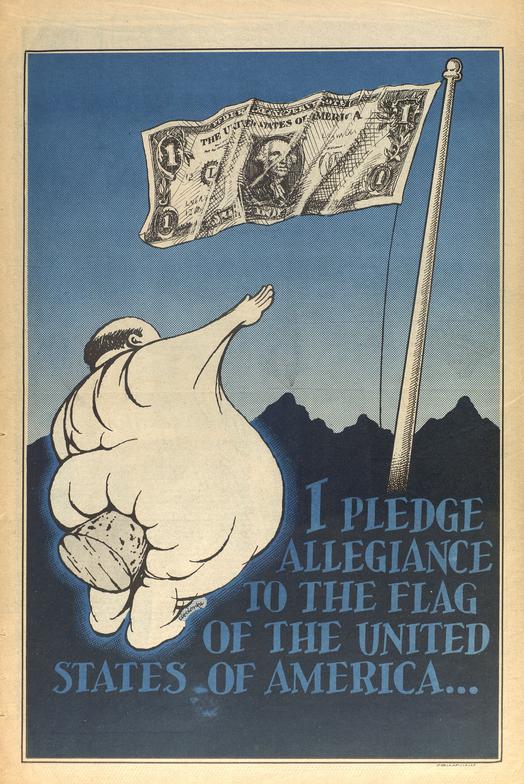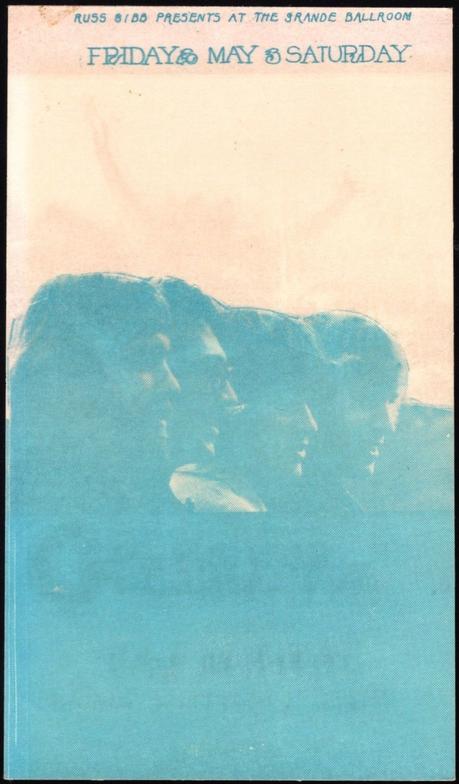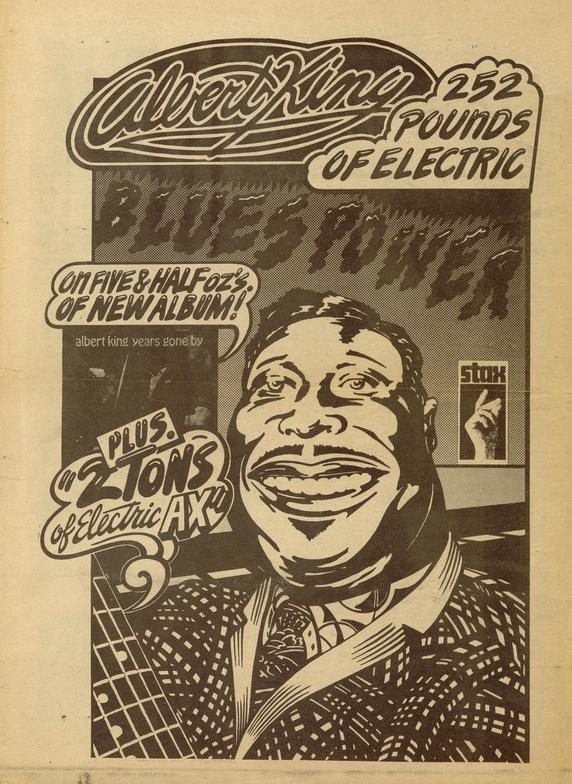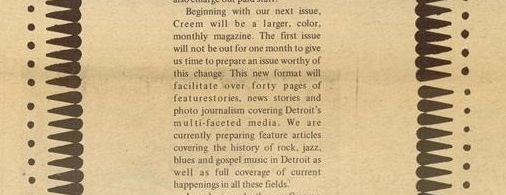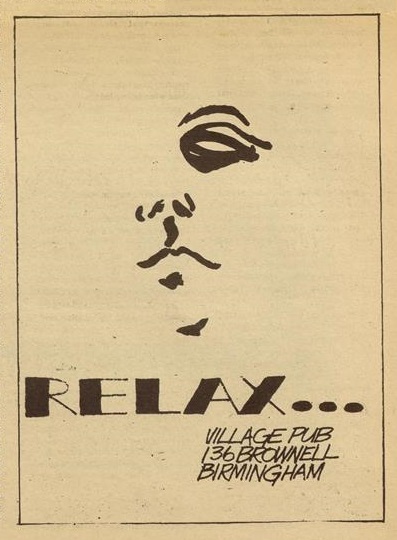Splatt Gallery
Double click here to add text.
Splatt Gallery's History of Michigan Concert Posters
Volume Five - 1969 - Page Eight
**********************************************************
An ad for Aaron Russo’s Kinetic Playground in Chicago, Illinois with SRC opening for the Grateful Dead and the Velvet Underground, April 25-26, 1969. SRC and the Velvets stuck around for one more show, without the Dead, on April 27th.
Poster by Mark Behrens with a schedule of events for Aaron Russo’s Kinetic Playground in Chicago, Illinois, with SRC appearing April 25-27, 1969, opening two shows with the Grateful Dead and three shows with the Velvet Underground.
Poster by Mad Peck Studios for a “Spring Weekend”, April 25-27, 1969, featuring Janis Joplin and including Smokey Robinson, at an unknown location, breaking one of the three rules for a concert poster: name of the act, date, and location.
Bill Haley returned to perform in his home state for the first time in twelve years, with this run of shows at the Roostertail in Detroit, Michigan, April 25, 1969 through May 3rd.
Poster by James Render for the Silverbell in Auburn Hills, Michigan, April 26. 1969, with the Mitch Ryder Show and Savage Grace.
The girls with the boys again, Pleasure Seekers and the MC5 at the Bowen Field House, Ypsilanti, Michigan, April 26, 1969. Poster by unknown artist.
A full-page Capitol Records ad in the April 26, 1969 issue of Billboard magazine for the third single from the Bob Seger System’s debut album.
The Bob Seger System – Ivory (1969)
https://www.youtube.com/watch?v=3lPjDPyuVvo
Freakouts #12 and #13 were on back-to-back nights, with #12 featuring The Now and Then at the Demonstration Hall on the MSU campus on April 26, 1969, and with #13 back at Grandmother’s, featuring Teegarden & Van Winkle with The Maxx.
The MC5 traveled down to Toledo, Ohio for two shows at the Firehouse on April 29, 1969. Poster by unknown artist.
Another one of the long narrow art strips by Gary Grimshaw, similar to the ones he made for the Kokaine Karma column in New York’s East Village Other newspaper. This one is from the April 30, 1969 issue for an astrology column called Emanations. We have no idea what it says along the top (if anything at all).
A full-page Stax Records ad for Johnnie Taylor’s remake of the Parliaments’ "(I Wanna) Testify) which it was issued as the lead single, slightly re-titled “Testify (I Wonna), from his album “The Johnnie Taylor Philosophy Continues” in April 1969.
It was Taylor’s second album to be produced by Detroit guitarist turned producer Don Davis. The title track of the previous album, “Who's Making Love” was a big hit in the summer of 1968. Davis, who also founded the Groovesville label and would soon purchase the United Sound recording studios in Detroit, continued to work with Taylor on a number of hit records in the 1970’s, the biggest being the monster hit “Disco Lady” in 1976.
Johnnie Taylor - Testify (I Wonna) (1969)
https://www.youtube.com/watch?v=NNX6deyZZ0U
May 1969 was “Marvin Gaye Month” in Billboard magazine.
While in exile, Gary Grimshaw started turning up in publications in San Francisco, California, beginning with the May 1969 issue of Movement, where his name was added by hand lettering to the staff box. The front cover features his work. He would stay with the publication until August, when he would begin working for the Berkeley Tribe newspaper
Gary Grimshaw collaboration with Frank Cieciorka, the artist of the clenched fist poster, on the back cover of the May, 1969 issue of the Movement newspaper in San Francisco, California.
A collection of some of Gary Grimshaw’s work in the Movement newspaper in San Francisco, California from May through August 1969.
Comic page by Carl Lundgren in the May 1, 1969 issue of The Fifth Estate newspaper in Detroit, Michigan.
A full-page ad for the debut album by Alice Cooper in the May 1, 1969 issue of the Helix newspaper in Seattle, Washington.
A full-page poster by an unknown artist for a May Day Celebration, 1969 in East Lansing, Michigan with live music provided by the band Plain Brown Wrapper.
While Brian Dombrowski was rolling out his Wheels-4 records from the basement of his Dearborn, Michigan home, a conglomerate practically around the corner, known as M.S.K. Productions, had multiple tentacles throughout the local music scene, from distributing jukeboxes to producing a variety of record labels, including Marquee Records, Kool Kat, and Dearborn.
We’ve previously featured the Marquee Record’s Buena Vistas “Here Comes Da Judge”, and The Fans “Roly Poly Mickey Lolich”, which tied into the stories of DJ Tom Shannon, Golden World’s Ed Wingate, Golden World alums and moonlighting Funk Brothers, Mike Terry, Popcorn Wylie, Bob Babbitt and Dennis Coffey, plus Carl Cisco, Nick Ameno and his wife’s many aliases, Kathy Keppen, Kathy Lynn, Lynn Terry, and Kathy Lynn & the Playboys.
We’ve had a few Dearborn releases by Me & Dem Guys and Tino & the Revlons, but these two one-offs, The Undecided? in 1966, and The Detroit Riots in 1969 are, by far, the rock stand-outs of the label.
The Detroit Riots – A Fast Way to Die (1969)
https://www.youtube.com/watch?v=Zx1JBSPKaCU
The Undecided? – Make Her Cry (1966)
https://www.youtube.com/watch?v=Apg0AWMd3XA
After 1969, it doesn’t appear that M.S.K. Productions in Dearborn, Michigan, released anymore freaked-out rock or quirky underground soul, and became primarily a Country & Western label.
We’ll leave them, for now, with these last three Buena Vistas tracks, an all-star pick-up band of sorts, with Bob Babbitt, Dennis Coffey, Popcorn Wiley, Mike Terry, Don Davis, Jack Ashford, and Richard “Pistol” Allen. All of these cats will continue to loom large in our story, the Buena Vistas (named for the street address for now defunct Golden World), sometimes also known as Willie Tell & the Overtures, are the sound of them having fun.
The Buena Vistas – Soul Clapping (1968)
https://www.youtube.com/watch?v=ekCnUCnh9f0
The Buena Vistas – Soul Ranger (1969)
https://www.youtube.com/watch?v=KYAuWwFqqlw
The Buena Vistas – Kick-Back (1969)
https://www.youtube.com/watch?v=W9fK0hyx7Z4
The 135th weekend at the Grande Ballroom, May 2-4, 1969, featured Leni Sinclair’s second poster for the venue, co-credited to Darlene, whom we believe is Darlene Pond, who was in charge of the MC5 fan club. This was the first Michigan appearance for Creedence Clearwater Revival, who were on a roll and released three albums in the year.
CCR, the Churls and Litter performed on the first two nights, and Taj Mahal appeared for the Sunday night show, also with the Churls and Litter.
Creedence Clearwater Revival – Green River (1969)
https://www.youtube.com/watch?v=L5V9nK7-OkM
A copy of the May 2-4, 1969 Grande Ballroom postcard that reveals the under-layer photo of the band.
Another “in process” shot of the Grande Ballroom postcard by Darlene Pond and Leni Sinclair for the Michigan debut of Creedence Clearwater Revival, May 2-4, 1969. The photo of the band is practically lost when the brown layer crowd shot is printed over.
A newsprint version of the poster by Leni Sinclair and Darlene Pond for the first Michigan appearance by Creedence Clearwater Revival, at the Grande Ballroom in Detroit, May 2-3, 1969, from the Fifth Estate newspaper.
Record label ad for the Canadian band The Churls who opened for Creedence Clearwater Revival and Taj Mahal at the Grande Ballroom, May 2-4, 1969. Discovered in a Toronto nightclub by the Everly Brothers, of all people, these guys should have been huge.
The Churls – Time Piece (1968)
https://www.youtube.com/watch?v=z44ynr0M1aI
We recounted earlier that the Grande Ballroom posters were printed at Gary Grimshaw’s uncle Ivor “Dave” Davidson’s Crown Printing print shop, and that it was there that Gary learned the techniques of printing. When Carl Lundgren took over as the main Grande artist, after Gary had to flee the state, Carl also learned his craft at Crown Printing.
We’ve also noted that as a cost-savings method, most of the Grande Ballroom posters were actually only printed in postcard size, beginning fairly early on. Near the beginning of 1969, Russ Gibb found a way to further reduce costs by switching to Community Print Shop, a much lesser-equipped, lower-end (cheaper) shop, which had been set up by a Cass Tech High School drop-out, Joel Landy, with the assistance of Lundgren.
On May 2, 1969, Jimi Hendrix made his fifth, and final, Michigan appearance, performing at Cobo Arena in Detroit. The famed Fillmore East poster artist, David Edward Byrd made the tour poster that was used across various cities. It’s interesting that bassist, Noel Redding is billed as also included, as this was right at the transition period where he was becoming replaced in the band by Billy Cox, and would leave the band at the conclusion of this tour in June.
Jimi Hendrix, at this point, was the highest-paid rock musician in the world.
A handbill/flyer version of David Byrd’s poster for Jimi Hendrix at Cobo Arena in Detroit, Michigan on May 2, 1969, which is probably harder to find than the poster.
Newspaper ad for Jimi Hendrix at Cobo Arena, May 2, 1969.
A very cool poster by an unknown artist for Jimi Hendrix at the Maple Leaf Gardens in Toronto, Canada on May 3, 1969, the night after the show at Cobo Arena in Detroit. Upon arrival at the Toronto airport on the flight in from Detroit Hendrix was arrested when a small amount of heroin and hashish was discovered in his luggage. Fearing a riot if he did not appear for the show, he was released on bail. Later, he was acquitted on the charges as the defense convinced the jury that Hendrix was unaware that the drugs were in his bag.
Another example of how the Crow’s Nest clubs had no desire, or budget, for creating elaborate show posters, and simply used blank band promo flyers with hand-written particulars on venue, date, time, and admission. This flyer is for the Amboy Dukes with Owen Love on May 2, 1969.
It appears that the club may have had a logo, Pete the Crow, by an unknown artist, which we’ve superimposed onto this flyer in the lower right.
The Crow’s Nest era was coming to an end. The original Crow’s Nest opened in Madison Heights, Michigan June, 1967, but was moved after only a few shows to the allocation in St. Clair Shores. When a second location opened in Westland at the beginning of 1969, the St. Clair Shores location became known as the Crow’s Nest East, while the Westland location was the Crow’s Nest West. The West only lasted until the end of May, 1969, and the East closed down for good at the end of the same summer.
We don’t know how we come across these things, in the nick of time, but here is a highly informative and entertaining story of The White Mud Booze Band, a gonzo guerilla ensemble of around 20 musicians, that hung out at the Crow’s Nest East, and helped shutter the place with their assault on it on July 18, 1969:
http://www.doctorhormone.com/the_white_mud_chronicles.htm
We’re calling this the fourth poster by artist Mary Partridge, in collaboration with her friend Phil, with Poor Richard’s Almanack and Fat Cat Candle at the the Village Pub on May 2, 1969 and with the James Gang and Warlocks the following night. It is the first one to actually have her name on it, in the absence of any other information, we gave her credit for the two earlier Village Pub posters. If her name had not been on this, we would have thought it was the work of Dennis Preston, who is coming up eminently, based on the illustrative style of the executioner figure. But the name on this one is clearly, Mary Phil.
The fourteenth Freakout, May 3, 1969, back again on the Michigan State University campus in East Lansing, poster by an unknown artist, and featuring the band Frost. As mentioned in a previous post, Dick Wagner’s Frost had signed to Vanguard Records and released their first album.
The Frost – Mystery Man (1969)
https://www.youtube.com/watch?v=tm4byxG9uaw
On the last weekend of April 25-27, 1969, while The Stooges rocked the Grande Ballroom, The MC5 and The Pleasure Seekers did their boy-girl act in Ypsilanti, The Nice brought their Brit-prog-rock to the Hideout, The Rationals packed the Crow’s Nest East and West, along with the Woolies, The Free (of the psychedelic freak-out posted earlier), and the Stuart Avery Assemblage, during all that, Terry Knight, solo with acoustic guitar, was on stage, playing for free admission at The Chessmate coffeehouse.
Coming from Flint, Michigan to see his show were two of his ex-bandmates from The Pack, Don Brewer and Mark Farner.
Since they’d last seen each other, Terry Knight had been on quite the adventures. Recall that Knight first came into our story back in 1963, when he became one of Ed McKenzie’s “Jack the Bellboy” successors on WJBK radio, and his penchant for attracting famous friends happened quickly as he was adopted as “the Sixth Stone” and went off to England to hang out with The Rolling Stones, coming back inspired to form Terry Knight & the Pack.
When Knight left to pursue a solo career, he moved to New York and later found himself in Florida were he became great friends with the English fashion model Twiggy, opening for her appearances with a set of songs. Twiggy, who had brought Mary Hopkins to The Beatles for their fledgling Apple Records label, called Paul McCartney and recommended that they also sign Terry. Within hours, McCartney sent Knight first-class tickets to fly to London and arranged for him to stay at Ringo’s flat.
Knight arrived during the recording of The White Album, in late 1968, and witnessed the fractious session where Ringo walked out on the band. McCartney, with all the turmoil, never had time to get with Knight during the visit, but as a consolation prize, Knight came back to the states with a producer’s contract with Capitol Records to use either for his own recordings or for others that he might choose.
Brewer, Farner, and the rest of The Pack hadn’t fared quite so well. In spite of a couple of fine singles, the band found itself in Cape Cod, Massachusetts pursuing a breakthrough that never came, resulting instead in a break-up that left Brewer and Farner abandoned when the other musicians went home to their wives in Michigan. By the time Brewer and Farner returned to Flint, they’d decided to continue as a simple trio, and recruited Mel Schacher, the bass player from Question Mark & the Mysterians.
They came to see Knight perform at the Chessmate and to find out if he would be interested in helping their new band. Knight was intrigued with the concept of a power-trio, well aware of the success of Cream, who had just called it quits, and after a trip to Flint to hear some rehearsals, he signed on to the project. And Knight recalled a song he had performed that night at the Chessmate, a self-penned little ditty about the Grand Trunk Western railway line that he’d called “The Grand Funk Railroad”.
Yet before he’d finally make it big, real big, Terry still had one more flop in him. On the plane ride back from London, he’d written a song in sycophantic admiration of his Beatle friend, gotten Joe Walsh and the Cleveland Symphony Orchestra to participate in the recording, and released the totally insipid, and copyright-challenging, final single, “Saint Paul”.
Terry Knight –Saint Paul (1969)
https://www.youtube.com/watch?v=qihYFfOd_lk
Volume Five - 1969 - continues - HERE
Full-page ad in Billboard magazine for Terry Knight’s single “Saint Paul”.
A pretty cool illustration by John van Hamersveld for Albert King’s third album, which was the back cover of Issue #5 of CREEM magazine, May 1969.
Albert King – Cockroach (1969)
https://www.youtube.com/watch?v=GsoPUNxLl6k
A statement regarding editorial and format changes in Issue #5 of CREEM magazine. We have cut it up so that you can read the full text.
An ad for the Village Pub in Birmingham, Michigan in Issue #5 of CREEM magazine.
A full-page feature on Savage Grace in Issue #5 of CREEM magazine.
A review of SRC and others performing on a WABX TV show in in Issue #5 of CREEM magazine.
The staff box for Issue #5 of CREEM magazine, the final issue with Editor/founder Tony Reay. Although not listed, artist Matthew Radowsky, aka Matt Rock created the front cover illustration as well as the logo for the Calendar and the “Opinion” logo for the letters section.
Issue #5 of CREEM magazine with front cover art by Matthew Radowsky, aka Matt Rock. The issue had an events calendar dated May 1-14, 1969. It would be the final issue with editor/founder Tony Reay.
The 134th weekend at the Grande Ballroom, April 25-27, 1969, featured a poster credited to Leni Sinclair, with the first usage of one of her more famous Iggy shots. Canned Heat and Family headlined the first two nights, with support by Caste and the Red, White & Blues Band. The Stooges headlined the Sunday night show, with All The Lonely People and Third Power.
This may be the third poster by Mary Partridge, for the Village Pub in Birmingham, Michigan, April 25-26, 1969.
A full-page Reprise Records ad for the second album by the British group Family and tour dates for their first US tour which includes two shows at the Grande Ballroom in Detroit, April 25-26, 1969. The concert database indicates that the band made their Michigan debut at the Hideout in Clawson a week earlier, with support by Teegarden & Van Winkle on April 18th.
The tour did not go so well, as bassist Ric Grech left the group after just the first show of the tour to join Blind Faith.
Poster by James Render for H.P. & the Grass Route Movement with Savage Grace and Third Power at the Cavern in Northville, Michigan, April 25, 1969.
An ad for folksinger Pete Seeger at Ford Auditorium in Detroit, Michigan on April 25, 1969, above an ad for The Groove Shoppe in solidarity with the MC5.









